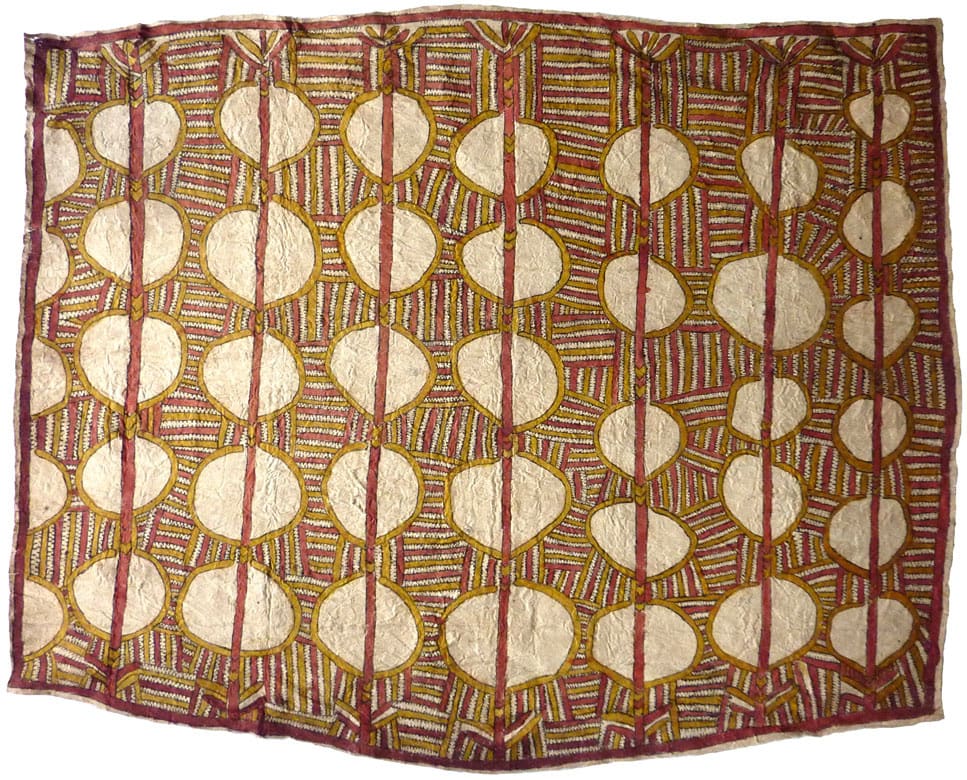We hold our mothers' teachings in our hearts and hands: Bark cloths from PNG
Past exhibition
Linda-Grace Savari (Majare) Papua New Guinean, Omie, b. c.1962
mahudano'e, mahu ane bios'e. hin'e baje ohu'o nyoni han'e - Pig's tusks and teeth, fruit of the mustard plant and fern leaves.
natural pigments on nioge (barkcloth)
141 x 115 cm
787968
Linda Grace has painted soru'e - Omie tattoo designs taught to her by her mother-in-law Fate Savari. The seven 'posts' that run through the work have both mahudan'e (pigs tusks)...
Linda Grace has painted soru'e - Omie tattoo designs taught to her by her mother-in-law Fate Savari. The seven 'posts' that run through the work have both mahudan'e (pigs tusks) and mahu ane bios'e (pigs teeth) attached. Pig's tusks are the traditional form of wealth for Omie tribespeople and are often used for bridesprice. During ceremonies, rituals and dancing pig's tusk necklaces
are worn by men and sometimes, although very rarely, by high-ranking women elders. The pig's tusks have mouthpieces which male dancers bite, displaying the object to make themselves look like fierce warriors. In the time of the ancestors when tribal conflicts, village raids and retribution were an everyday part of life, no doubt this would have served a very important purpose.
The strings are also sprouting hin'e baje, the fruit of the mustard plant which is used to dip into the lime gourd and aids in the chewing of betelnut, a very important Omie social custom known as hai'ue. Between the strings and around the edges of the work are repetitious lines representing nyoni han'e, fern leaves. The border or orriseege (pathways) provides a compositional framework for the design.
are worn by men and sometimes, although very rarely, by high-ranking women elders. The pig's tusks have mouthpieces which male dancers bite, displaying the object to make themselves look like fierce warriors. In the time of the ancestors when tribal conflicts, village raids and retribution were an everyday part of life, no doubt this would have served a very important purpose.
The strings are also sprouting hin'e baje, the fruit of the mustard plant which is used to dip into the lime gourd and aids in the chewing of betelnut, a very important Omie social custom known as hai'ue. Between the strings and around the edges of the work are repetitious lines representing nyoni han'e, fern leaves. The border or orriseege (pathways) provides a compositional framework for the design.
